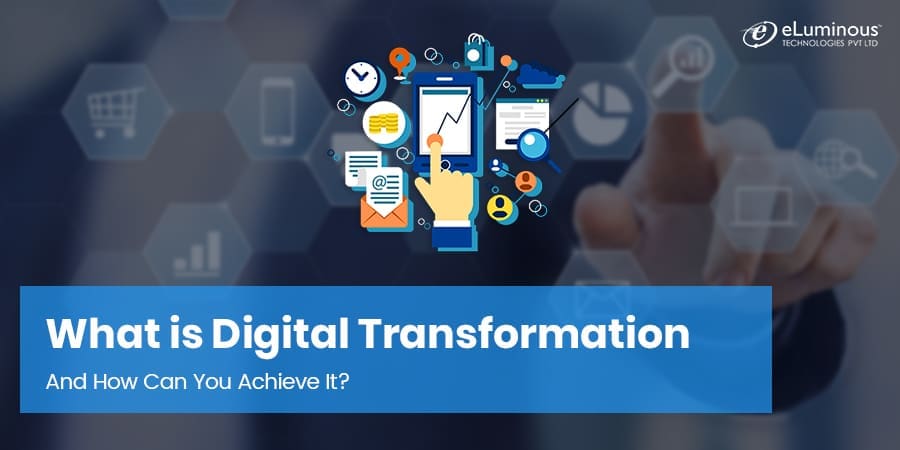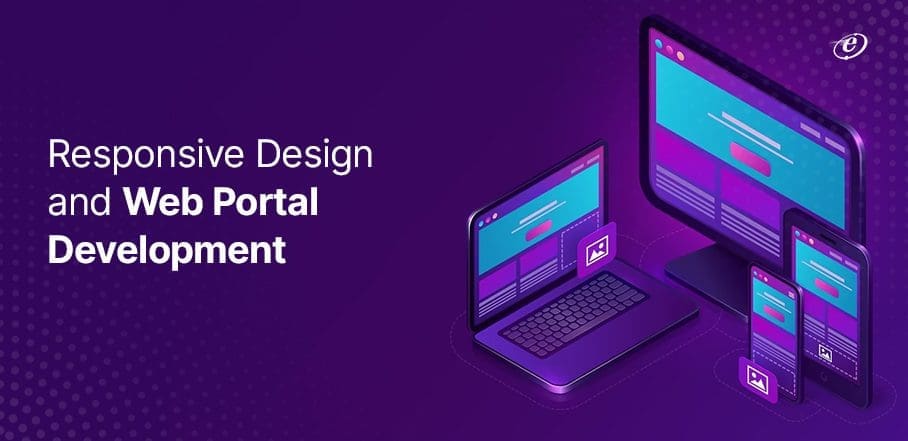
What is Digital Transformation & How Can You Achieve It?
Digital transformation is the quintessential buzzword that has caught the fancy of business leaders these days. And unfortunately, there are as many definitions of digital transformation as there are business leaders in the world today.
So, what is digital transformation all about?
The definition from Salesforce, which is one of the earliest trendsetters of the digital transformation revolution, hits home well.
It defines digital transformation as “the process of using digital technologies to create new — or modify existing — business processes, culture, and customer experiences to meet changing business and market requirements.”
Or to put it simply, it’s how businesses and organizations reinvent or innovate their various internal processes for the fast-paced digital age.
Digital transformation vs Digitization
A nuanced point that gets lost in the din is that digital transformation and digitization are two different things.
For instance, digital transformation can apply to aspects of a business that are already digital – e.g. a web application hosted on in-house servers. This is in addition to aspects that are non-digital – e.g. manual processes based on paperwork.
Despite the difference between the two, there’s no denying that any digital transformation project needs to be digital and all that it represents – fast, agile, innovative, and collaborative.
Why digital transformation fails?
While the definition might seem straightforward enough, executing a digital transformation project is anything but. This is especially true for enterprises and large organizations, which are inherently resistant to iterative changes, let alone ground-up transformation.
Traditional enterprises also rely on a set of proven processes to achieve the desired quality of output. However, most of these legacy processes and systems can be lethargic and a cause of frustration.
For instance, after a certain point, business units within large enterprises tend to attain critical mass, which is to say they start operating independently of each other. Such a silo-ed structure inhibits collaboration and the desire to work towards a common shared vision.
The unfortunate part here is that several enterprises fall prey to this quagmire unwittingly, which makes the task of digital transformation all the more difficult.
What does a successful digital transformation strategy need?
A mindset change
In the early days, before digital transformation became the catchword it is now, many established companies and enterprises realized that the traditional way of working hobbled innovation. But instead of a revamp on the organization level, they chose a confined and easier solution – innovation labs.
These labs – instituted by storied names like Amazon, Google, and Walmart, among others – were tasked with coming up with newer ideas in a faster, more efficient, and less risky way.
However, the actual task of implementing innovation and scaling up still rested with the entities that operated within the traditional enterprise structure.
Complementing these labs, at times, were acquisitions of digital IP or the talent that created it. But as with innovation labs, this approach too fell short of inculcating a digital transformation culture throughout the enterprise.
Which is why innovation labs and acquisitions, while no doubt vital to innovation, can only play a complementary role in digital transformation and not replace it altogether.
Data is the key
Over the last decade, big data has taken the business world by storm. Thanks to the proliferation of smart consumer devices, increasingly fast mobile and broadband connectivity, and the rise of social media, companies are flooded with massive amounts of data.
What complicated the issue further is that this data was diverse. Organizations, consequently, couldn’t separate the wheat from the chaff, i.e. obtain meaningful and actionable insights from massive piles of data. And worse still, in the absence of enterprise-wide digital transformation, access to this data was restricted or silo-ed.
- data has to be made accessible throughout the enterprise
- the potential of that data has to be unlocked through analysis (automated as well as manual)
From defining new KPIs to improving profitability, the business intelligence derived through this data helps foster enterprise-wide digital transformation in several ways.
Better tooling is essential
GitHub, the popular code repository tool, revolutionized the way people collaborated or worked together on a common project. What began as a way for individual developers to store and share code soon evolved into a collaborative tool that enabled easier and location-independent access to a piece of code.
And while GitHub started as a consumer application, it’s popularity and features forced enterprises to look at them as a way to enhance employee collaboration within. Other examples of such collaborative tools include Trello, Docker Enterprise, Dropbox, Slack etc.
With collaboration being one of the cornerstones of digital transformation, enterprises must adopt tooling that makes it easier for employees and teams to collaborate.
Not only do these tools reduce the complexities associated with internal or proprietary networks but they also break down silos and streamline workflows without degrading security.
The change must be all-pervasive
In the larger scheme of things, digital transformation is all about the people in your organization. People who develop products need to work closely together with the people who sell, support and use those products.
In the traditional setup, business ideas were formulated, tested, and developed internally. In a digital organization, that decision is instead driven by customer needs and parsed data.
With greater collaboration, the right enterprise tools, appropriate processes, and greater accessibility and analysis of data, digital transformation on an organizational scale is indeed possible. And when such a transformation does happen, it leads to shorter development lifecycles, reduced costs, better products, and greater profitability.
Over to You
While the benefits of digital transformation are similar for most organizations, the process that leads up to it isn’t necessarily so. Simply put, there’s no one proven way to effect digital transformation successfully. However, the underlying principles driving that transformation remain the same as outlined above.
When an enterprise adopts these digital transformation principles along with better processes, useful data, and enhanced tools, it results in an efficient, innovative, and rewarding work culture that inevitably leads to sustained success.
Do you believe your organization is ready to embrace digital transformation? Do let us know your thoughts in the comments below.



